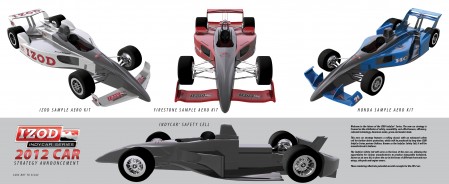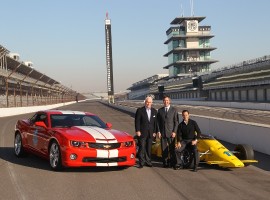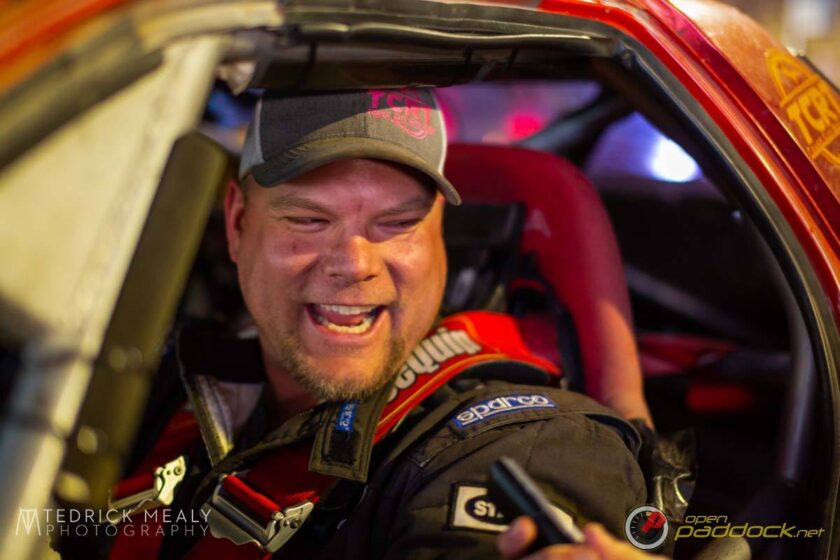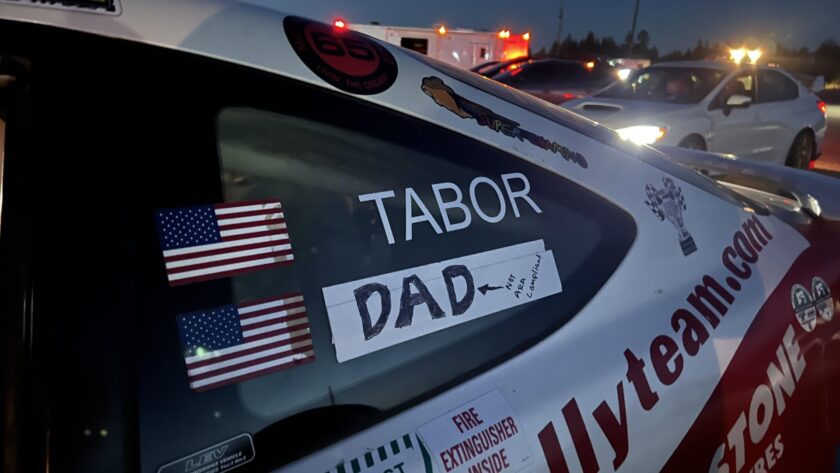There’s been a significant rumbling from the owners, most notably from Jimmy Vasser, co-owner of KV Racing Technologies. What they see is the $75k price tag on new aero kits and rate that as a cost they’d rather not pay. Truth is, they DON’T have to pay it. The Dallara chassis that they’ll need to buy in order to compete in the IZOD IndyCar Series in 2012 come with the Dallara aero kit. If they have a relationship with another engine manufacture such as Chevrolet or Lotus, they’ll of course need the corresponding kit as neither Chevrolet or Lotus will be keen on having their engine packaged with competitor’s aero kit. After all, the whole aero kit business is a marketing exercise after all. This is something that we highlighted last year as the 2012 chassis details were just becoming available to the public. That may mean that many teams may reach a business-to-business arrangement for the aerokits from the manufacturers, such as what KVRT and Lotus already have established. Let’s look at the consequences of delaying until 2013 from a few different perspectives starting with the manufacturers, since that’s ultimately where the money and variety in series will originate.

From the Manufacturers’ Perspective

From the Fans’ Perspective
Make no mistake, the current equipment package for the IZOD IndyCar Series is beyond stale. The current Dallara chassis has been in the series since 2003, and eventually became the sole chassis when Panoz withdrew from the sport rather than further developing their chassis to compete with the superior Dallara. A similar scene would play out on the engine size of the equation as Honda would drive out both Chevrolet and Toyota with a superior powerplant so that in 2007, we saw a de-facto spec series with everyone running a Dallara chassis powered by a Honda Indy V8. Slowly, the interest in the series has waned, and a questionable TV package with a little known sports channel, Versus, which was only available on premium cable and satellite packages, if available at all, drove TV ratings into the sub-basement.
no images were found
Most races on Versus now only pull a 0.3 rating as compared to the 1.0+ ratings they received on ABC/ESPN. Attendance at the track has waned as well. Oval races which had drawn crowds upwards of 70k to 80k fans at venues like the Kansas Speedway, now struggle to draw 30k. Much of the blame has been placed on the spec nature of the series with every car looking and sounding exactly alike.For years, the interest in Indy car racing was coupled to the unique cars and creative engineering solutions teams and manufacturers would bring to the track. The promise of multiple engines and multiple aerodynamic solutions in 2012 has stirred up a lot of interest and enthusiasm amongst the fandom. Putting the multiple aero kits back to 2013 would clamp the brakes on what forward momentum the series has going into 2012 as teams will settle once again into the default Honda/Dallara package once again. This would be disastrous for the series and would continue its downward spiral.
From the Teams’ Perspective
The teams may think that waiting may benefit them financially, but its at best a short-term gain with long-term costs. First, the purchase of an extra aero kit is not requisite as the Dallara chassis will come with the Dallara aero kit. The extra $75k will only apply to additional kits for the chassis from Chevrolet, Lotus, and perhaps Oreca. Beyond that, is $75k really going to make or break a team’s budget when looking at a minimum operation cost of about $3M? That extra cost represents only 2.5% of the total budget and that’s for a team running at the bare minimum. Meanwhile, the cost of NOT having the aero kits for 2012 as I mentioned above will be reduced manufacturer involvement, reduced fan interest, and ultimately reduced sponsor interest. This is where the teams will be hurt the most. It’s already extremely difficult to secure sponsorship in motorsports, and especially in the IZOD IndyCar Series where TV rating are so poor that rumors are beginning to surface about IZOD withdrawing from the series if things don’t improve. With Firestone already committed to a withdrawal in 2013, and things looking uncertain for IZOD, the sponsorship landscape for 2012 and beyond is already looking bleak. Create a situation in which even the manufacturers who have already expressed an interest in participating series are forced to reconsider their involvement, and things could become dire for most of the marginally funded team, and even for some of the moderately funded teams.
The way I see it, wanting to push the introduction of aero kits until 2013 is penny wise and pound foolish! There are a number of consequences that will have detrimental long-term effects. What say you? Do you agree with team owners like Jimmy Vasser who would like to see a delay? Think I’m close to the mark? Or perhaps is the truth somewhere in between? Let us know in the comments section below, and on the forums of our friends at IndyCar Garage.




Smart move. Simply put, only the upper echelon teams could really whole heartily put the time, money and effort needed into this. This gives the smaller teams a half chance for another year, things are finally seeming to resemble parity in the series, someplace where money doesnt buy races (this will always be a factor but, it seems to me at the present time to be much more evenly balanced). This in combination with the fact that economy is down and people are not watching the series (on versus) anyways, makes this a sound business decision. The teams needs to pinch pennies where they can, and save the majority of the bag of tricks for when the sponsors are planning on jumping ship. Think of it like a intro with the newer engines should hopefully bring additional eyeballs to the events, and the initial honeymoon that these eyeballs have with the series will be prolonged with an even newer introduction the following year. Think F-1, what do people talk about during the off season? It most certainly is not the previous season, it is the new gimmicks and toys. This selective disclosure of the introduction of the “new toys” will help to systematically build a long term fanbase; rather than the initial spike and than lull that may accompany the introduction of too many things at one time.
Methinks Jimmy’s reluctance to embrace the aero kits in 2012 has something to do with Lotus. Lotus has made commitments in F1, Le Mans and IndyCar. All are fairly expensive marketing exercises. But rumors swirl about Lotus as they are seeking more funding since they have spent so much of Proton’s money. Also, rumors are swirling about Danny Bahar’s long term prospects to remain as CEO of Lotus. Add all this to the fact that Lotus does not sell that many cars…..
IndyCar is currently pretty cheap (comparatively) for Lotus, since it is a sponsorship arrangement, but things are ramping up as engine development should be underway and aero development should begin sometime this spring/summer. But I question Lotus ability to fund such efforts, and unfortunately, Jimmy may be thinking those same questions.
But beyond Lotus and Jimmy, the series would suffer a pretty big black eye if they chose to delay the aero kits. They have attempted to get several new manufacturers involved in the sport using the idea of new engines and aero kits for 2012. It sends the wrong message if they waffle on the 2012 package now.
Lets not forget that an aero kit has to be attached to the 2012 car so somebody will have to make one. Dallara is supposedly forcing the teams to buy their aero kit with every chassis sold. If that is true, then that is a poor decision by IndyCar. The teams should be allowed to spend their money wherever they please.
If your going to say your doing something, do it! You said 2012, make it 2012. Fans wanted different cars, you gave us same car with different look options. We took it, now you want to scratch that? Do you really want new fans? Do you want to keep the ones you got? 2012 looks to be the year your main attraction walks to your competition… This is how you want to follow that up… Nice.
Completely agree Joe. This is going to be a huge shot to INDYCAR and the owners are just being damn fools about it. We were told by teams and series political figures 2012 was the year we have it all. Now…we have engines with a Dallara kit…this is really bad. I have some choice words for some of the owners…but I will keep it down a little 🙂